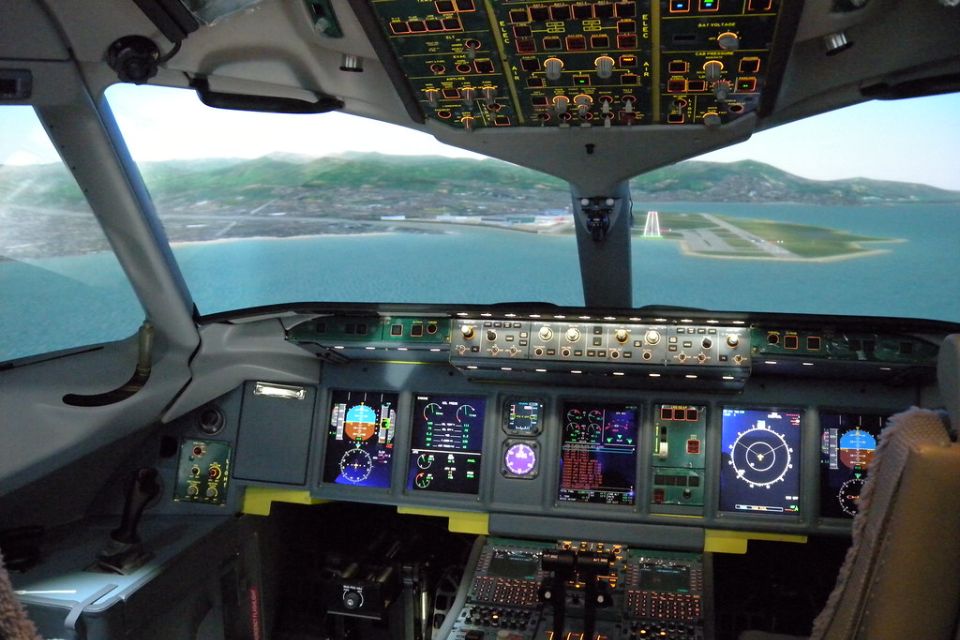
“Full Flight Simulator | The Full Flight …” from www.flickr.com and used with no modifications.
Your First Steps to the Sky: Choosing the Right Flight Simulator
Embarking on your journey to become a pilot is thrilling, and the right flight simulator is your launchpad. It’s not just about getting your hands on any simulator; it’s about finding the one that fits your training needs like a glove. The market is brimming with options, each with its own set of bells and whistles, but the goal is clear: to secure a simulator that will equip you with the skills and confidence to take to the skies for real.
Understanding Different Simulator Types
Flight simulators come in various shapes and sizes, each designed to serve a specific purpose in your training. Some are perfect for beginners, offering a basic understanding of flight principles, while others are sophisticated enough to challenge even the most seasoned pilots. Here’s a quick rundown:
- PC-Based Simulators: Ideal for novices, these are cost-effective and easily accessible, providing a solid foundation in flight basics.
- Advanced Aviation Training Devices (AATDs): These offer a more immersive experience, with realistic controls and instrumentation for intermediate learners.
- Full Flight Simulators (FFS): The crème de la crème of simulation, used by professionals to simulate every aspect of flight with motion and visual systems.
Knowing where you stand in your training journey will help you pick the right type of simulator. Start simple and progress as your skills demand more complexity and realism.
Essential Features for Realistic Training Experience
When scouting for a flight simulator, certain features are non-negotiable if you’re after a realistic training experience. Look for:
- High-quality graphics: They make a world of difference, providing visual cues akin to real flying conditions.
- Accurate flight dynamics: The simulator should mimic the true behavior of an aircraft in various flight conditions.
- Diverse weather scenarios: From clear skies to thunderstorms, training across weather conditions is crucial.
- Realistic controls and instrumentation: The closer they are to what you’ll find in an actual cockpit, the better.
- Expandability: The ability to add aircraft, scenery, and other modules keeps your training up-to-date.
These features will ensure that every hour spent in the simulator translates to valuable learning that carries over to actual flight.
Maximizing Training with Flight Simulator Programs
Flight simulator programs are not just about logging hours; they’re about making every session count. To do this, you need to adopt a strategic approach to your simulator use. Focus on mastering the fundamentals before moving on to more complex tasks. Consistent practice, coupled with reflection on each session, will solidify your skills.
Here’s how you can get the most out of your simulator training:
- Set clear objectives for each session, whether it’s practicing takeoffs and landings or navigating cross-country.
- Use real-world flight plans and scenarios to give context to your practice.
- Record your sessions and review them to identify areas for improvement.
- Challenge yourself with emergency procedures and abnormal situations to build confidence and decision-making skills.
- Seek feedback from instructors or experienced pilots to enhance your learning curve.
Remember, the goal is to create a seamless transition from simulation to actual flight, and that requires deliberate and focused practice.
Structured Practice: What to Focus On
“The best pilots are the ones who practice with intention.” – Aviation Instructor
Structured practice in a flight simulator involves a systematic approach to learning. It’s not about aimless flying; it’s about targeted sessions that build your abilities step by step. Here are the key areas to concentrate on:
- Aircraft familiarization: Know your aircraft inside out, from the engine start-up sequence to the emergency shutdown.
- Flight fundamentals: Master the basics of pitch, roll, yaw, and throttle control for a solid flying foundation.
- Navigation: Use VORs, GPS, and other navigational aids to get from point A to B efficiently and safely.
- Communication: Practice radio etiquette and phraseology to communicate effectively with air traffic control.
- Instrument proficiency: In IFR conditions, your instruments are your eyes. Learn to trust and interpret them accurately.
By focusing on these areas, you’ll develop a robust skill set that will serve you well in both simulated and real-world flying situations.
Integrating Simulators into Your Training Schedule
Think of your training schedule as a recipe for success; every ingredient must be measured and added at the right time. Simulators are a key ingredient. To integrate them effectively, balance is essential. Dedicate specific days to simulator training, focusing on the skills you’ve outlined in your structured practice. Alternate these with days of rest or study to let the new skills sink in. And remember, quality trumps quantity. It’s better to have three hours of focused, purposeful simulator training each week than to clock aimless hours every day.
Here’s a simple weekly schedule to consider:
Flight Simulator Training Programs
- Monday: Simulator session focused on navigation and communication.
- Wednesday: Review of Monday’s session and study for the next.
- Friday: Simulator session with emphasis on emergency procedures.
- Weekend: Rest and reflect on the week’s training, preparing for the next.
By sticking to a schedule, you’ll ensure steady progress without burning out or overwhelming yourself.
Cost-Effective Learning: Flight Simulation vs. Real Aircraft Training
It’s no secret that learning to fly isn’t cheap. However, flight simulators offer a cost-effective alternative to logging all your hours in a real aircraft. They allow you to practice maneuvers and procedures as many times as you need, without the costs of fuel, aircraft rental, and wear and tear. This doesn’t mean you should skip real-world flying altogether, but simulators can significantly reduce the financial burden of pilot training.
Breaking Down the Costs
Let’s talk numbers. Renting a small aircraft can cost anywhere from $100 to $200 per hour, and that’s before adding in the cost of an instructor, fuel, and maintenance. On the other hand, a high-quality flight simulator program might have an upfront cost, but it’s a one-time investment that pays dividends in the long run. Here’s a rough comparison:
- Aircraft rental for 50 hours: $5,000 – $10,000
- Flight simulator program: $500 – $1,500 (one-time purchase)
By incorporating simulators into your training, you can potentially save thousands while still gaining valuable experience.
When to Invest in Real Flight Time
While simulators are invaluable, nothing can fully replace the experience of real flight time. It’s essential for gaining practical experience in handling an aircraft, dealing with weather, and managing the unexpected. So, when should you invest in real flight time? Use simulators to build confidence and competence in procedures and maneuvers, then validate those skills in the aircraft. Once you’re consistently performing well in the simulator, it’s time to take those skills to the skies.
Advanced Training: Prepping for Commercial Pilot Success
As you set your sights on a commercial pilot career, your training must evolve. Advanced training isn’t just about flying; it’s about understanding the intricacies of commercial operations, from complex aircraft systems to the regulations that govern them. Here’s how to step up your game:
- Invest in specialized simulator programs that replicate commercial aircraft and their systems.
- Practice scenarios that are common in commercial aviation, such as multi-crew coordination and long-haul flight planning.
- Understand and apply the principles of crew resource management (CRM) within the simulator environment.
- Use simulators to familiarize yourself with different types of commercial aircraft you may fly in the future.
Commercial pilot success is built on a foundation of solid training, and simulators are a cornerstone of that foundation. They provide a risk-free environment to hone your skills and prepare for the complex and demanding world of commercial aviation.
Sophisticated Flight Scenarios and Emergency Situations
Simulators shine when it comes to practicing scenarios that you hope never to encounter in real life. Engine failures, sudden weather changes, and system malfunctions are all events that can be safely experienced and managed within the virtual environment of a flight simulator. This is where you can push the boundaries, make mistakes, and learn from them without any real-world consequences.
It’s essential to expose yourself to these high-pressure situations to develop the mental resilience and quick thinking required in emergencies. The key is repetition; the more you practice, the more instinctive your reactions become. By doing so, you’ll be better prepared for any eventuality, ensuring you keep a cool head when it matters most.
Maintaining Safety Standards Through Simulated Practice
Flight safety is paramount, and simulators play a crucial role in maintaining high safety standards. Regular practice in simulated environments helps reinforce standard operating procedures and emergency protocols. It’s about building muscle memory for the correct responses to potential in-flight emergencies and system failures.
Simulated practice also allows for the exploration of the limits of both pilot and aircraft in a controlled setting. This deep understanding of what can go wrong, and how to correct it, is invaluable. It ensures that when you’re up in the air, you’re not just a pilot; you’re a guardian of safety.
Navigating the Controls: Familiarization with the Virtual Cockpit
Stepping into the virtual cockpit for the first time can be overwhelming. There’s a plethora of switches, dials, and screens, each with a specific function. But don’t worry, it’s all part of the learning curve. Familiarizing yourself with the layout and functionality of the cockpit controls is a fundamental step in your training.
Start by learning the primary flight controls, then gradually work your way through the engine controls, navigation instruments, and other systems. It’s not about memorizing the position of every switch but understanding what each one does and how it affects the aircraft’s performance.
Mastering Instrument Panels and Displays
Instrument proficiency is a critical skill for any pilot. In the simulator, you have the perfect opportunity to master the readouts and indications on your instrument panels and displays. Focus on the primary flight display (PFD), multi-function display (MFD), and engine indication and crew alerting system (EICAS) if available.
Understanding the information these panels provide—and how to respond to it—is crucial. Practice interpreting the data during different phases of flight and in response to simulated system alerts. This will build your confidence and ensure you’re never caught off guard by an unexpected reading.
Understanding the Feedback from Flight Simulators
One of the most valuable aspects of simulator training is the feedback it provides. Whether it’s a visual cue, an auditory alarm, or a tactile response from the controls, each piece of feedback is a learning opportunity. Pay attention to what the simulator is telling you; it’s a chance to correct course before developing bad habits.
After each session, take the time to review what went well and what didn’t. Use this feedback to adjust your training focus. Remember, the simulator is a tool, and like any tool, its effectiveness depends on how you use it. Listen to it, learn from it, and let it guide you toward becoming a skilled and safe pilot.
Key Takeaways
As we wrap up our exploration of flight simulator training software and programs, let’s highlight the key points to remember:
- Choosing the right flight simulator is crucial for effective pilot training and should match your current skill level and goals.
- Simulators range from basic PC-based setups to advanced full-flight simulators, each serving different stages of pilot training.
- Key features such as high-quality graphics, realistic flight dynamics, and diverse weather scenarios are essential for a true-to-life training experience.
- Structured practice and integrating simulators into your training schedule can maximize the benefits of simulation.
- While simulators are invaluable for training, real flight time is essential for practical experience and handling real-world flying conditions.
FAQ
What is the Best Flight Simulator for Beginners?
For those just starting out, a PC-based flight simulator like Microsoft Flight Simulator or X-Plane is often recommended. These platforms are user-friendly, offer a variety of training scenarios, and provide a solid foundation in the basics of flight without overwhelming newcomers. They also have the flexibility to scale up in complexity as your skills improve.
How Accurate Are Flight Simulators Compared to Real Flying?
High-end flight simulators, especially Advanced Aviation Training Devices (AATDs) and Full Flight Simulators (FFS), are engineered to replicate the experience of flying as closely as possible. They model aircraft behavior, environmental conditions, and cockpit instrumentation with remarkable accuracy. However, while they are incredibly sophisticated, they cannot fully replicate the physical sensations and psychological pressures of flying an actual aircraft.
Can You Become a Pilot Using Only Flight Simulators?
No, you cannot become a licensed pilot using only flight simulators. While simulators are an integral part of pilot training, providing a safe and cost-effective environment to learn and practice, actual flight time is required to obtain a pilot’s license. Flight simulators complement real-world training, allowing you to practice and perfect maneuvers and procedures before performing them in an aircraft.
How Do Flight Simulators Help with Emergency Training?
Flight simulators are a pilot’s best ally when it comes to emergency training. They allow you to experience critical situations in a zero-risk environment. From engine failures to electrical outages, simulators can replicate a wide array of emergencies that you might encounter in the air. This is where you can practice your response to high-stress scenarios until your actions become second nature.
Here’s what makes simulators so effective for this type of training:
- Repetition: You can rehearse emergency procedures multiple times to build confidence and proficiency.
- Variety: Simulators can present a range of emergencies, some of which are so rare that you might never encounter them in a real aircraft.
- Instant feedback: You get immediate results on your performance, allowing for quick learning and adaptation.
- Safety: You can make mistakes and learn from them without any real-world consequences.
- Customization: Scenarios can be tailored to your current learning needs, focusing on specific areas where you need the most practice.
Emergency training in simulators builds not just skill, but also the mental fortitude to remain calm and collected when faced with real-life emergencies.
What Should I Look for When Choosing a Flight Simulator Program?
Selecting a flight simulator program is a pivotal decision in your pilot training journey. The right program can significantly enhance your learning experience, so here are some key factors to consider:
- User Interface: It should be intuitive and user-friendly, allowing you to focus on flying rather than fumbling with controls.
- Aircraft Variety: A good simulator offers a range of aircraft models to practice on, each with accurate flight characteristics.
- Scenery and Airports: Detailed environments and a wide selection of airports add to the realism of your training.
- Support and Updates: Regular updates and a strong support community are vital for keeping your simulator current and troubleshooting any issues.
- Training Tools: Look for features like replay, customizable weather, and scenario-based training modules.
- Compatibility: Ensure the simulator is compatible with your hardware and any additional peripherals you plan to use.
Take the time to research and compare different flight simulator programs. Read reviews, watch tutorials, and, if possible, test them out before making your decision.
In conclusion, flight simulators are a transformative tool in the realm of pilot training. They provide a platform where aspiring pilots can hone their skills, understand the nuances of flight, and prepare for real-world challenges without leaving the ground. Whether you’re a beginner or on the path to becoming a commercial pilot, simulators offer a wealth of benefits that can accelerate your learning and enhance your abilities.
Remember, the best simulator is the one that aligns with your training goals and grows with you as you progress. It’s an investment in your future as a pilot, providing a solid foundation of knowledge and experience. So, choose wisely, practice diligently, and let your flight simulator training take your skills to new heights.
FAQ
How Do Flight Simulators Help with Emergency Training?
Flight simulators are invaluable for emergency training, offering a safe environment to practice and master critical procedures. They allow pilots to experience a wide range of emergency scenarios, providing the repetition and feedback necessary to develop quick, correct responses without the risks associated with real-life training.
What Should I Look for When Choosing a Flight Simulator Program?
When choosing a flight simulator program, consider the user interface, aircraft variety, scenery and airports, support and updates, training tools, and hardware compatibility. These factors ensure a comprehensive and realistic training experience that can adapt to your evolving skills as a pilot.

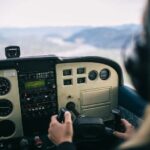
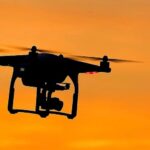
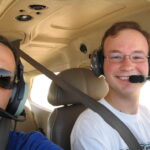
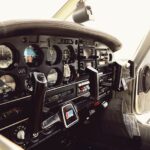
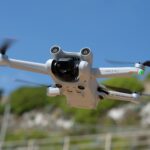
Leave a Reply